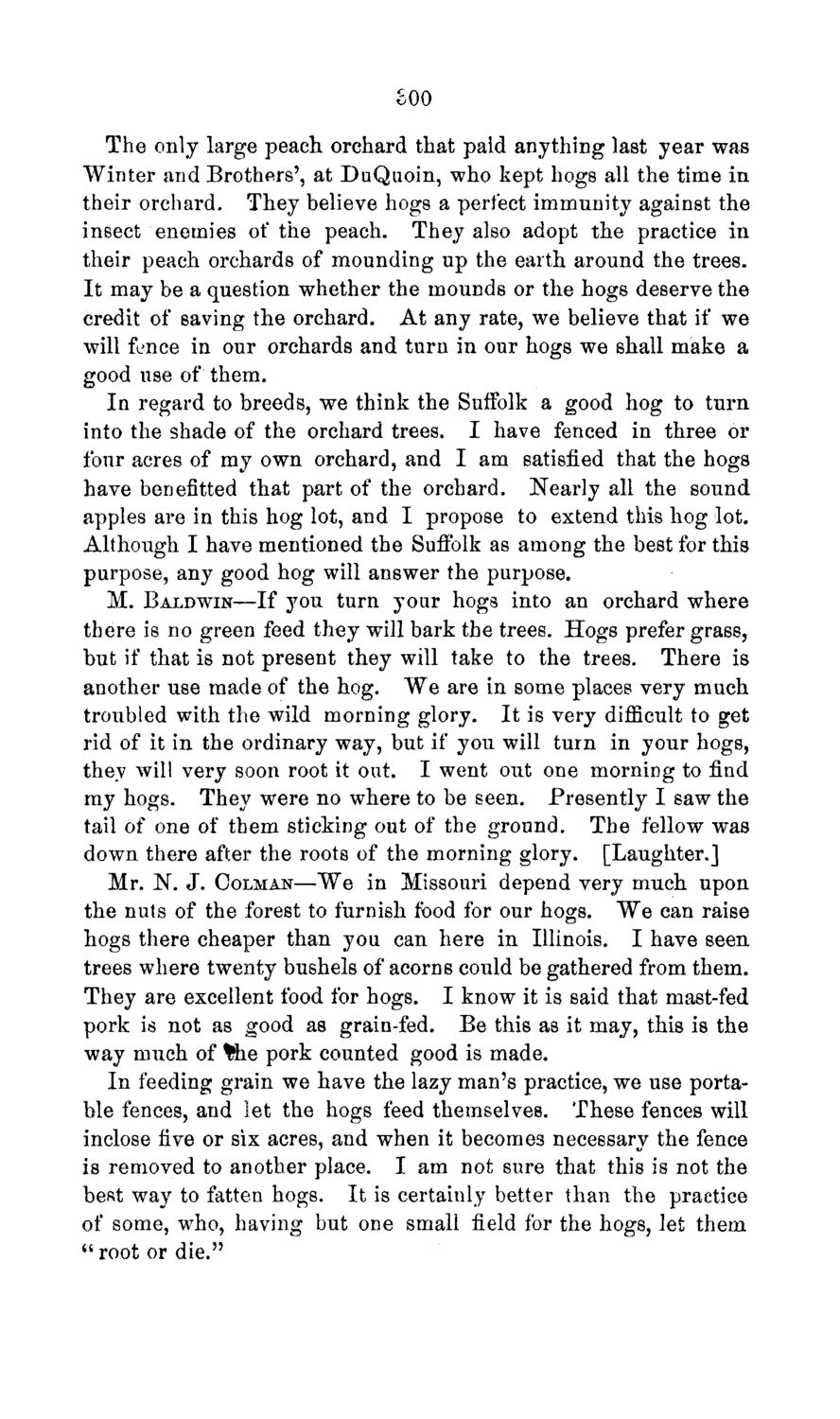| |
| |
Caption: Board of Trustees Minutes - 1869
This is a reduced-resolution page image for fast online browsing.

EXTRACTED TEXT FROM PAGE:
soo The only large peach orchard that paid anything last year was Winter and Brothers', at DaQuoin, who kept hogs all the time in their orchard. They believe hogs a perfect immunity against the insect enemies of the peach. They also adopt the practice in their peach orchards of mounding up the earth around the trees. It may be a question whether the mounds or the hogs deserve the credit of saving the orchard. At any rate, we believe that if we will fence in our orchards and turn in our hogs we shall make a good use of them. In regard to breeds, we think the Suffolk a good hog to turn into the shade of the orchard trees. I have fenced in three or four acres of my own orchard, and I am satisfied that the hogs have benefitted that part of the orchard. Nearly all the sound apples are in this hog lot, and I propose to extend this hog lot. Although I have mentioned the Suffolk as among the best for this purpose, any good hog will answer the purpose. M. BALDWIN—If you turn your hogs into an orchard where there is no green feed they will bark the trees. Hogs prefer grass, but if that is not present they will take to the trees. There is another use made of the hog. We are in some places very much troubled with the wild morning glory. It is very difficult to get rid of it in the ordinary way, but if you will turn in your hogs, they will very soon root it out. I went out one morning to find my hogs. They were no where to be seen. Presently I saw the tail of one of them sticking out of the ground. The fellow was down there after the roots of the morning glory. [Laughter.] Mr. N. J. COLMAN—We in Missouri depend very much upon the nuts of the forest to furnish food for our hogs. We can raise hogs there cheaper than you can here in Illinois. I have seen trees where twenty bushels of acorns could be gathered from them. They are excellent food for hogs. I know it is said that mast-fed pork is not as good as grain-fed. Be this as it may, this is the way much of %he pork counted good is made. In feeding grain we have the lazy man's practice, we use portable fences, and let the hogs feed themselves. These fences will inclose five or six acres, and when it becomes necessary the fence is removed to another place. I am not sure that this is not the best way to fatten hogs. It is certainly better than the practice of some, who, having but one small field for the hogs, let them " root or die."
| |